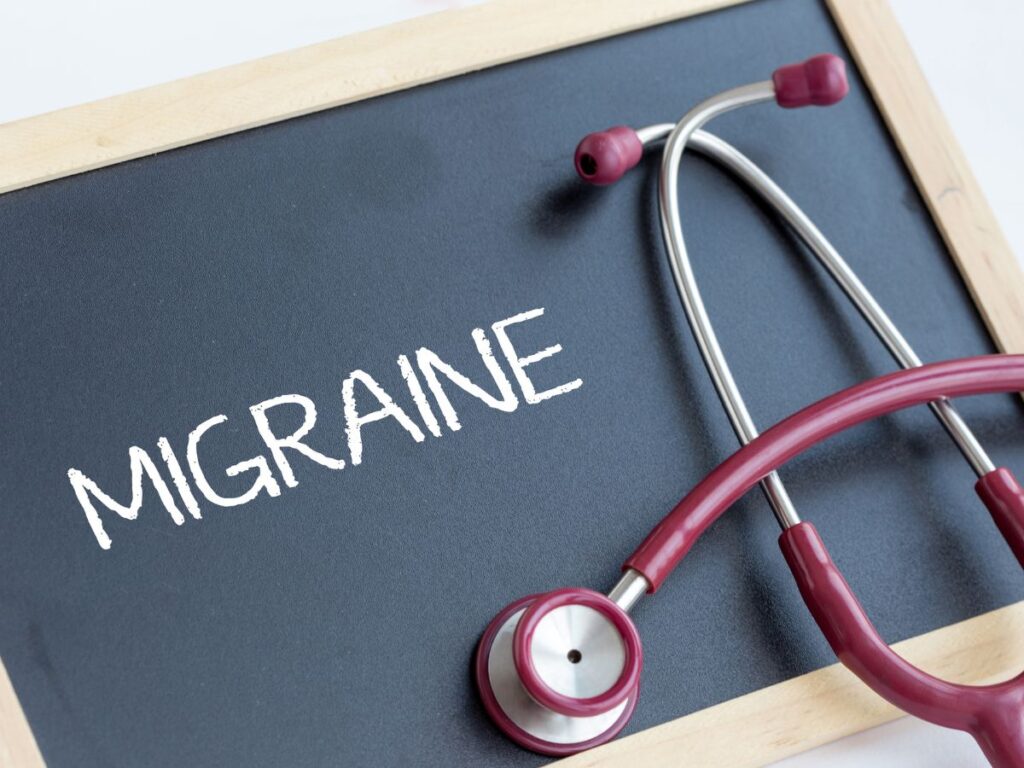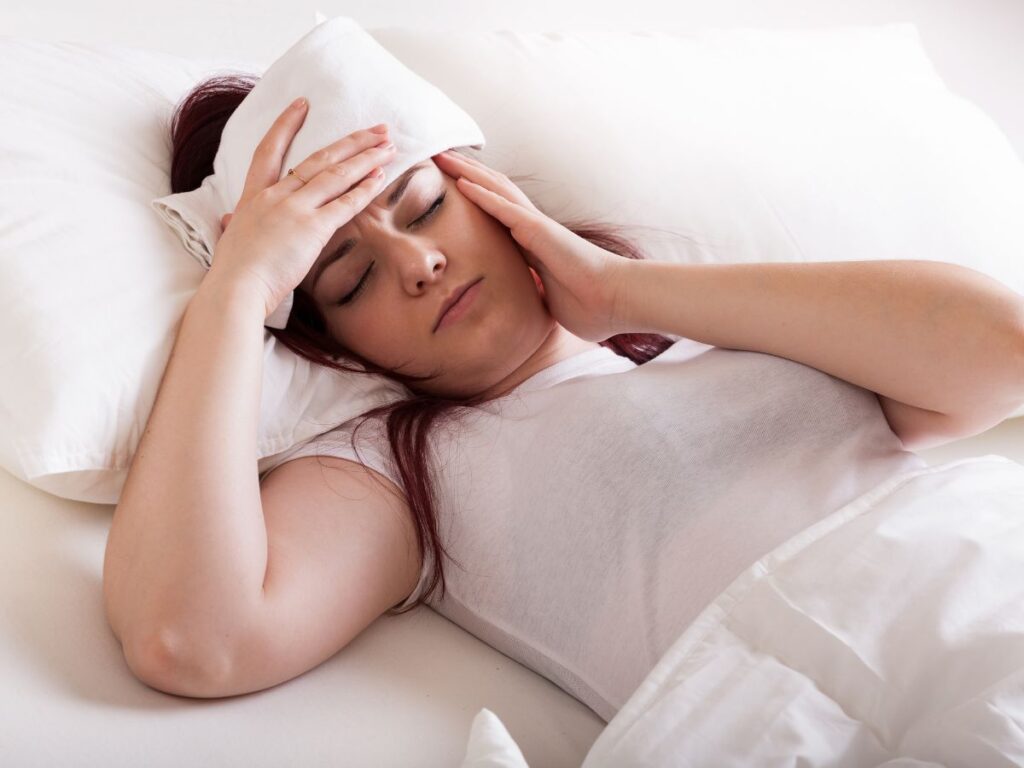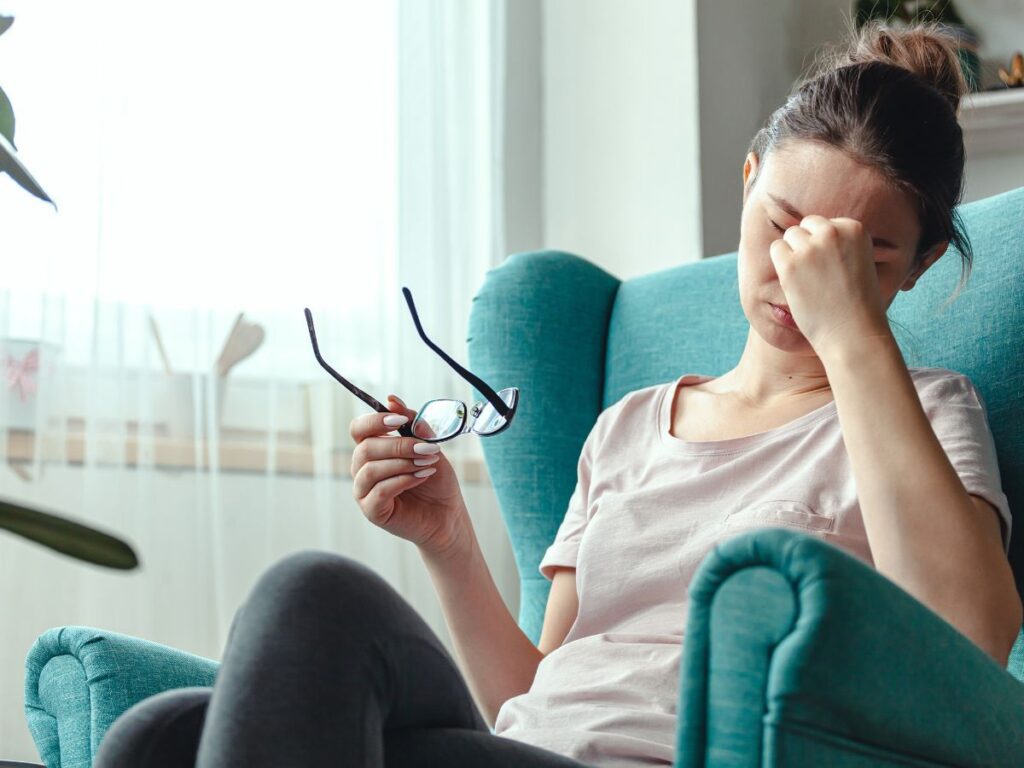What is Migraine Headache?
A migraine headache is a neurological condition characterized by recurrent, intense headaches that typically cause throbbing or pulsating pain, often on one side of the head. Migraines are often accompanied by other symptoms, such as nausea, vomiting, sensitivity to light, and sensitivity to sound. These episodes can last for a few hours to several days, significantly impacting daily activities and quality of life.

Are You Experiencing Migraine Headache?
If you are experiencing a headache frequently, the initial step is to determine the specific type of headache you have. At times, a headache serves as a symptom of another disease or condition, while in other instances, there may be no apparent cause.
Examining your headache symptoms more closely can assist in identifying the type of headache you are dealing with. The underlying cause may be related to pain.
What are the Reasons of Migraine Headache?
Headaches have become a common occurrence for many people in today’s busy world. Sometimes, they result from medical conditions, but often, they are simply due to stress, dehydration, or working late nights. Although there are numerous ways to alleviate these headaches, treatments involving various medicines do not always completely eliminate the symptoms. If this condition is severe, you can seek assistance from doctors specializing in pain through the Pain website.

Ways to Get Rid of Migraine Headache
1. Massage therapy
Yes, massage may sound unusual, but it is also incredibly therapeutic. Sometimes, headaches are caused by tension in the upper body due to poor posture or muscle strain from a strenuous exercise routine. Massage may also help reduce the muscle tension that leads to pain.
2. Hot Or Cold Applications
A hot or cold compress can provide relief for muscle tension. To prevent skin damage, cover your head with a heat pack. Pain is felt more.
You can also create a pack using raw rice. Take a small pillowcase or a piece of cloth and fill it about two-thirds full with raw rice. Microwave it, then apply it to the back of your neck or forehead for heat relief.
3. Aromatherapy
Aromatherapy is the study of how certain scents can bring positive and even healing relief to the brain.
4. Acupuncture
Acupuncture involves the insertion of fine, sharp needles into key points on the body to promote the flow of energy. According to the source, it has been shown to reduce the frequency and severity of pain.
5. Breathing Exercises
Yes, breathe – something you already do all the time. It may sound silly, but stress-related issues can sometimes be alleviated with regular breathing exercises that focus your mind and help you relax. This helps to relax the muscles.
Find a quiet place in your home, office, or another location with a comfortable chair where you won’t be distracted. Then, take slow, rhythmic breaths – inhale for five seconds, then exhale for five seconds. As you relax, your muscles become less tense.
6. Dehydration
Dehydration can play a role but can be easily avoided. Drinking a good old-fashioned glass of water can help, as can an electrolyte drink. However, just as there are some drinks that can cause headaches, there are also beverages that can increase pain.
We often opt for drinks like caffeine instead of water; their chemicals dehydrate the body. Only water and fresh juice are the best for your health. Be sure to consult with the best nutritionist on-site.
7. Lack of Sleep
We often hear about health problems resulting from a lack of sleep and how it can lead to inadequate rest at night. However, recognizing the need for more sleep and actively ensuring you get it can be beneficial. Various factors play a role.
8. Sleep Schedules
Establish regular sleep patterns by consistently going to bed and waking up at the same times. Even adjusting your bedtime by just 15 minutes earlier or later can be a positive step in the right direction.
9. Some Things to Avoid Before Going to Bed
Stimulants like alcohol, sugar, nicotine, and caffeine can hinder your ability to sleep and may lead to the need to use the bathroom at night. Allow your body time to settle before your head actually hits the pillow.

Adopt a Headache Diet
Certain foods, while delicious, are known to trigger it.
- Foods and Drinks Containing Caffeine
- Include items such as chocolate, coffee, cola, and tea.
Foods Containing Monosodium Glutamate
MSG is used as a preservative and is traditionally employed in some Asian cooking. It is also found in foods such as instant ramen noodles.
Foods Containing Tyramine
Tyramine is a compound produced through the breakdown of the amino acid tyrosine and is present in foods like pizza and aged cheese.
Sip a Soothing Cup of Tea
The warmth and comfort of a steaming cup of herbal tea create the perfect recipe for a relaxing night’s sleep. These properties may have pain-relieving effects, including chamomile, ginger, and dandelion. Since herbs can interact with medical conditions and medications, it’s important to consult with a doctor before consuming this tea for pain relief.
Doctor’s Advice is Essential
Almost everyone experiences a headache, and many are nothing to worry about. However, if the headache is disrupting your activities at work or in your personal life, it’s time to consult your doctor. It can’t always be prevented, but your doctor can assist in treating the symptoms.

Conclusion:
In conclusion, managing and alleviating migraine headache involves a multifaceted approach that considers various factors contributing to the pain. Identifying the specific type of headache and understanding its potential causes, whether stemming from medical conditions or lifestyle factors, is crucial. While headaches have become prevalent in today’s busy world, there are diverse strategies to address them.
The highlighted ways to get rid of migraine headache, such as massage therapy, hot or cold applications, aromatherapy, acupuncture, and breathing exercises, offer therapeutic alternatives. Additionally, adopting good sleep hygiene practices, staying hydrated, and maintaining a balanced diet by avoiding certain triggers can significantly contribute to headache prevention.
The importance of seeking professional advice from doctors, especially if headaches significantly impact daily activities, cannot be overstated. A headache, while a common ailment, may sometimes necessitate medical attention for proper diagnosis and symptom management. In essence, understanding the interplay of various factors and adopting a holistic approach, including medical consultation, enhances the chances of effectively managing and minimizing the impact of migraine headaches on one’s life.


